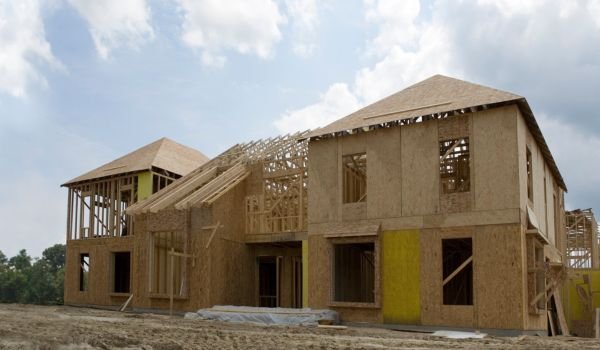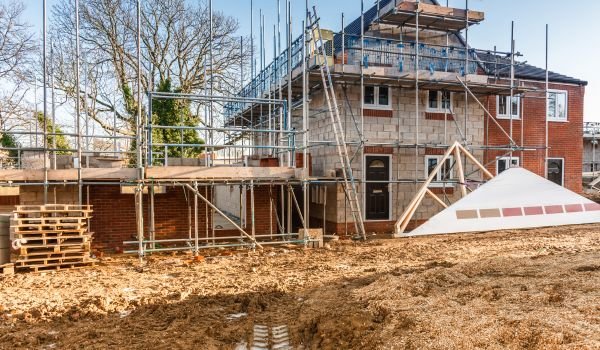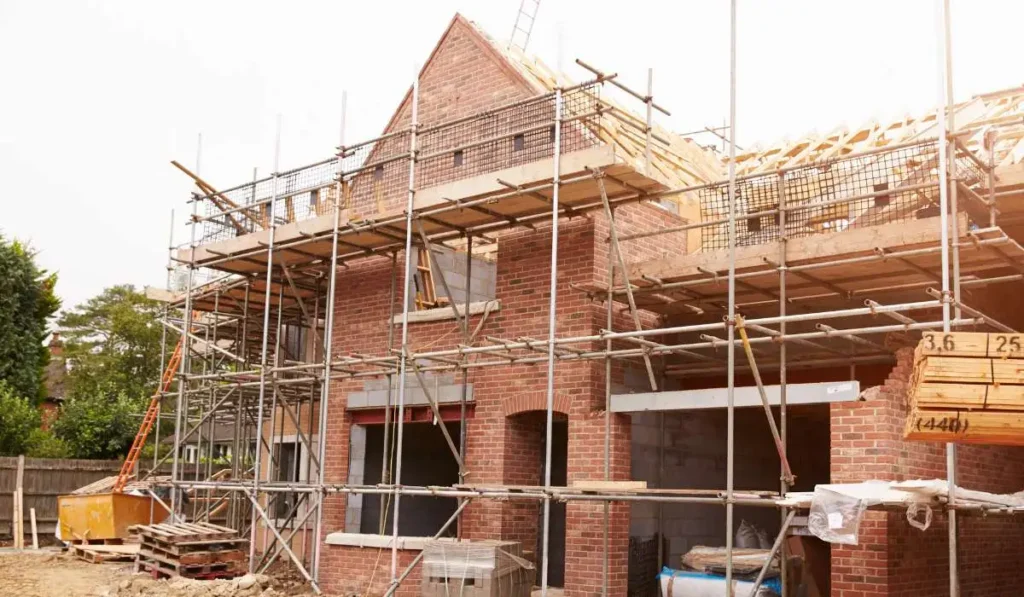The process of build a custom home is very personal and frequently culminates in the home of your dreams. It’s not an easy or fast task, however. Careful preparation, perseverance, and a clear grasp of the time commitment are necessary for the whole process, from choosing the ideal location to placing the last brick. We’ll go over the schedule for creating a bespoke house in this post, explaining each step so you can go forward with confidence.
An Overview of Custom Home Construction

A bespoke house is an expression of your own ideas and lifestyle requirements, not just a building. Custom houses are constructed from the ground up, in contrast to pre-designed or manufactured homes. It is tempting to design every element, from finishes to floor layouts, but there are challenges involved. Every choice, no matter how big or tiny, has an impact on how long the project takes.
The Value of Comprehending Time Frames
Comprehending the schedule is essential to ensuring a seamless building process. A bespoke home’s construction timeline may vary greatly based on a number of variables, such as the home’s location, complexity, and unanticipated challenges. A realistic sense of timeliness aids in expectation management, efficient budgeting, and the mitigation of stress that often accompanies such massive projects.
Recognizing the Fundamentals of Building Custom Homes

A Custom Home: What Is It?
A bespoke house is constructed from the ground up to meet the unique needs of the homeowner. A bespoke home gives you the freedom to choose every aspect, including the interior design, materials, architectural style, and landscape, in contrast to prefabricated houses. While exciting, this freedom of choice also brings with it new choices and tasks that affect how long construction takes to complete.
Important Distinctions Between Production and Custom Homes
The degree of personalization and control is the primary distinction between production houses and bespoke homes. Production houses are constructed in large quantities, sometimes using prefabricated components and blueprints that restrict customization. A bespoke house, on the other hand, is distinct and gives you complete control over every aspect. On the other hand, compared to a production house, where much of the decision-making is already done, this degree of customisation usually prolongs the construction process.
Phase Before Construction

Selecting the Ideal Site
Finding the ideal site is the first step in build a custom home. This entails assessing elements including the land’s topography and closeness to services, employment opportunities, and educational institutions. The amount of time needed to ready the site and start building might vary depending on factors including slope, soil type, and accessibility.
Getting Project Finances in Place
Getting a mortgage for an existing house is not the same as financing a custom construction. Construction loans are a common source of funding for bespoke projects; these loans are disbursed gradually as the project moves along. Since building cannot start until finances are in place, securing funding early is crucial to preventing delays.
Working with Architects and Designers to Design Your Home
Designing a custom house is one of the most exciting parts of the construction process. This step, however, may take a while. It may take many months to work with architects and designers to complete your concept, create comprehensive drawings, and make sure the design complies with local construction requirements. A well-planned design will expedite the building process in addition to reflecting your preferences.
The Function of Regulations and Permits

Getting Around Building Permits and Zoning Laws
You have to go through the complex web of building rules, zoning restrictions, and permit procedures before construction can start. Localities have different restrictions, and getting the required permissions may be a drawn-out procedure. It is crucial to include in the time required for plan submission and approvals, since these are often uncontrollable delays.
How Local Laws Impact Your Construction Schedule
Your timing may be greatly impacted by local rules. It may be necessary to modify your designs in order to meet with local regulations regarding the height, style, or location of your house. Early awareness of these limitations throughout the design process might help avoid delays later on.
Selecting Your Construction Group

Choosing a Builder: Things to Consider
Selecting the ideal constructor is among the most crucial choices you will have to make. A trustworthy builder with expertise in build custom home can help you navigate the intricacies of the building process, resulting in a more streamlined procedure. Choose a builder that shares your vision, has excellent communication skills, and can show a history of completed projects that have been successful.
The Value of Qualified Contractors
A competent builder is not the only need for the success of your custom house; professional contractors are also necessary. Every contractor, from plumbers to electricians, has to be very skilled in their field to prevent expensive errors and delays. Making sure your builder collaborates with knowledgeable subcontractors might help you stay on track with your project.
How the Correct Group Can Simplify the Procedure
A well-organized workforce with adept project management abilities may significantly shorten the time needed to construct your unique house. A well-aligned architect, builder, and contractor may minimize delays and improve the flow of the project. Frequent updates and unambiguous expectations may also help avoid costly errors.
Launching the Project

Site setup: excavation and clearing
The site has to be ready when the design and permissions are complete. During this stage, the soil must be graded, the vegetation removed, and the foundation dug out. This might take a few days to many weeks, depending on the state of the site. Unexpected problems like poorly-quality soil or concealed rock formations may cause this schedule to be extended.
Establishing the Base: Categories and Timing Issues
Any house must have a foundation, and the type—slab, crawl space, or complete basement—affects the price and time required to build it. The pouring and curing of concrete may be delayed by severe rain or very cold temperatures, which can also affect this step of the process.
Phase of Construction
Framing: Your House’s Bone Structure
Your house begins to take form during the framing stage. Windows and doors are positioned, the roof is put in, and the walls are raised. This is an important turning point since it signifies the start of real building. The length of time it takes to frame your house will depend on its size and intricacy.
HVAC, Electrical, and Plumbing: Knowing the Fundamentals
The installation of necessary systems, such as the HVAC, electrical, and plumbing, starts after the frame is up. These systems are essential to the functioning of the house, and errors made at this stage might result in costly rework. The project must be effectively coordinated to ensure that these installations are completed on time.
Interior and Exterior Finishes: Impacting Timing and Aesthetics
Interior and exterior finishes, including as flooring, cabinets, siding, and landscaping, are completed during the latter phases of construction. Not only can these components enhance the visual attractiveness of your house, but they also demand meticulous attention to detail. Installing custom finishes sometimes takes longer, particularly if you’re dealing with unusual or specialist materials.
Important Elements That Affect Building Time

The Effects of the Weather on Construction
The weather is a variable component that might cause major delays to your project. Extreme heat, rain, or snow may cause work to stall or slow progress. Although some delays cannot be avoided, their effects may be lessened by making plans for seasonal weather trends.
Problems with Material Availability and the Supply Chain
Construction may also be slowed down by shortages of materials or problems with the supply chain. This is particularly valid if you choose imported or bespoke materials. Work with your builder to order supplies well in advance and to have backup plans in place to prevent delays.
Requests for Customization and Change Orders
Although the primary appeal of creating a bespoke house is customisation, alterations to the initial design may cause delays in construction. Implementing every change order, whether it a new fixture or a changed layout, takes more time. Make as many choices as you can before construction starts to ensure that everything runs on time.
Reasonable Timeline Anticipations

Average Time Spent Constructing a Custom House
The typical bespoke house takes ten to sixteen months to build. Nevertheless, the length and complexity of the project will determine how long it takes to complete. Larger, more sophisticated houses may take well over 18 months to create, while simpler homes with less bespoke amenities can be finished in less than a year.
The Impact of Project Management on Schedules
Having effective project management is crucial to completing your new house on time. A proficient builder will create a precise schedule, communicate with subcontractors, and account for any delays. Your project may remain on schedule with the support of proactive problem-solving techniques and frequent updates.
Case Studies
Examples of Custom Home Projects in Real Life
Examining actual case studies of custom house construction might provide you important information about what to anticipate. For instance, with meticulous planning and a cooperative construction staff, one family’s ideal house was finished in only 12 months. However, another project took eighteen months because of unforeseen problems with the soil and delays in the delivery of materials.
Best Practices and Takeaways
The most frequent takeaway from building a custom house is to be prepared for the unexpected. Despite your best efforts, unanticipated difficulties may still occur. The secret to overcoming these challenges without having your whole project derailed is to be patient and flexible.
Organizing for Postponements
Typical Causes of Custom Home Project Delays
Weather-related delays, problems with permits, contractor availability, and shortages of materials are some of the most frequent reasons for delays. You may prepare for these possible obstacles by being aware of them beforehand.
How to Reduce the Chance of Failure
Make early choices, keep lines of communication open with your construction crew, and prepare ahead of time for inclement weather and supply shortages. Having a flexible schedule can also enable you to accept delays without becoming too agitated.
Approaching Finalization
Final Exams and Approvals
Your custom house has to pass many inspections and have the required certifications before you can move in. These checks guarantee that everything is safe for habitation and complies with local building requirements. Planning beforehand for these inspections may help avoid last-minute hiccups.
Pre-Move-in Needs Inventory
When the house is almost finished, you should be ready to move in. This include turning on the utilities, making sure every appliance is installed and working, and doing a last walk-through to take care of any finishing touches.
Acquiring Your New Residence
Tips & Tricks for Getting Ready for the Big Move
Relocating to a new residence may be both thrilling and daunting. Make sure your relocation goes well by marking boxes for simple unpacking, hiring reputable movers, and planning your move for a time when there won’t be any last-minute construction work happening.
Getting Used to Your New Setting
It’s time to become comfortable in your new place once you’ve moved in. As you become used to the design, the area, and the peculiarities of a new house, this may take some time. As you work to make your house feel like a home, have patience.
Upkeep and Maintenance
First-Time Homeowners’ Maintenance Considerations
The upkeep of your brand-new house is still necessary. In the first months, you will need to take care of little problems like HVAC adjustments or settling cracks. Maintaining these little fixes will keep your house in excellent shape.
Extended Maintenance for Your Custom House
In the long term, regular cleaning, repairs, and inspections are necessary for preserving your custom house. To protect your investment, schedule yearly HVAC maintenance, roof inspections, and foundation problems to be looked at.
Read More: How Much Does It Cost To Build A Custom Home
In summary
Summary of the Timeline for Custom Home Construction
Although it takes time, creating a bespoke house is a fulfilling process that yields a unique living area that is tailored to your particular requirements. Every stage, from selecting the ideal site to completing details, is an essential component of the entire schedule.
Motivation to Start Your Own Home Construction Project
When the time comes for you to start constructing a custom house, welcome the process with enthusiasm and patience. Living in a house designed just for you is a reward that makes every step worth it, even when there may be obstacles on your path.
